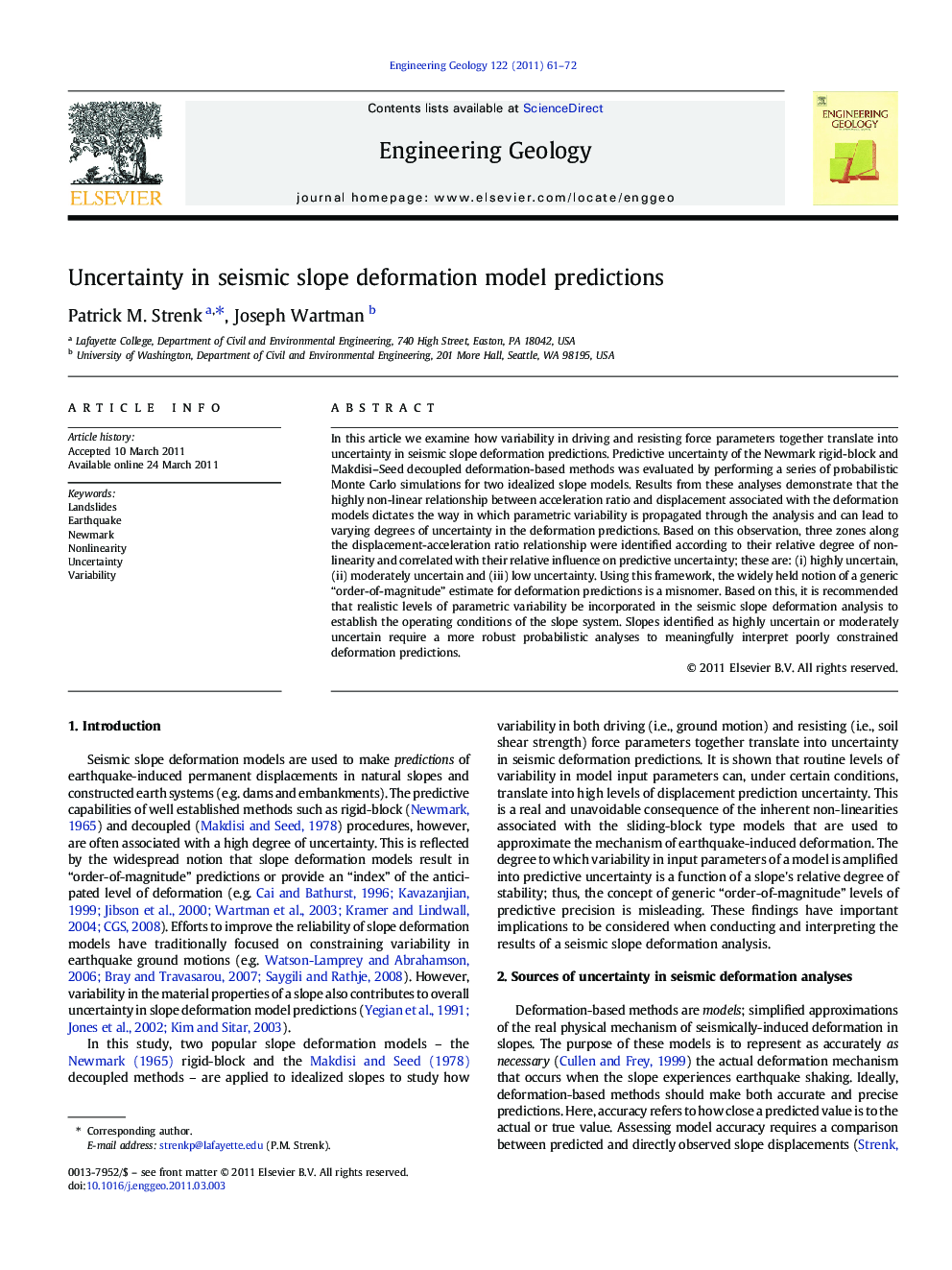| Article ID | Journal | Published Year | Pages | File Type |
|---|---|---|---|---|
| 4744336 | Engineering Geology | 2011 | 12 Pages |
In this article we examine how variability in driving and resisting force parameters together translate into uncertainty in seismic slope deformation predictions. Predictive uncertainty of the Newmark rigid-block and Makdisi–Seed decoupled deformation-based methods was evaluated by performing a series of probabilistic Monte Carlo simulations for two idealized slope models. Results from these analyses demonstrate that the highly non-linear relationship between acceleration ratio and displacement associated with the deformation models dictates the way in which parametric variability is propagated through the analysis and can lead to varying degrees of uncertainty in the deformation predictions. Based on this observation, three zones along the displacement-acceleration ratio relationship were identified according to their relative degree of non-linearity and correlated with their relative influence on predictive uncertainty; these are: (i) highly uncertain, (ii) moderately uncertain and (iii) low uncertainty. Using this framework, the widely held notion of a generic “order-of-magnitude” estimate for deformation predictions is a misnomer. Based on this, it is recommended that realistic levels of parametric variability be incorporated in the seismic slope deformation analysis to establish the operating conditions of the slope system. Slopes identified as highly uncertain or moderately uncertain require a more robust probabilistic analyses to meaningfully interpret poorly constrained deformation predictions.
